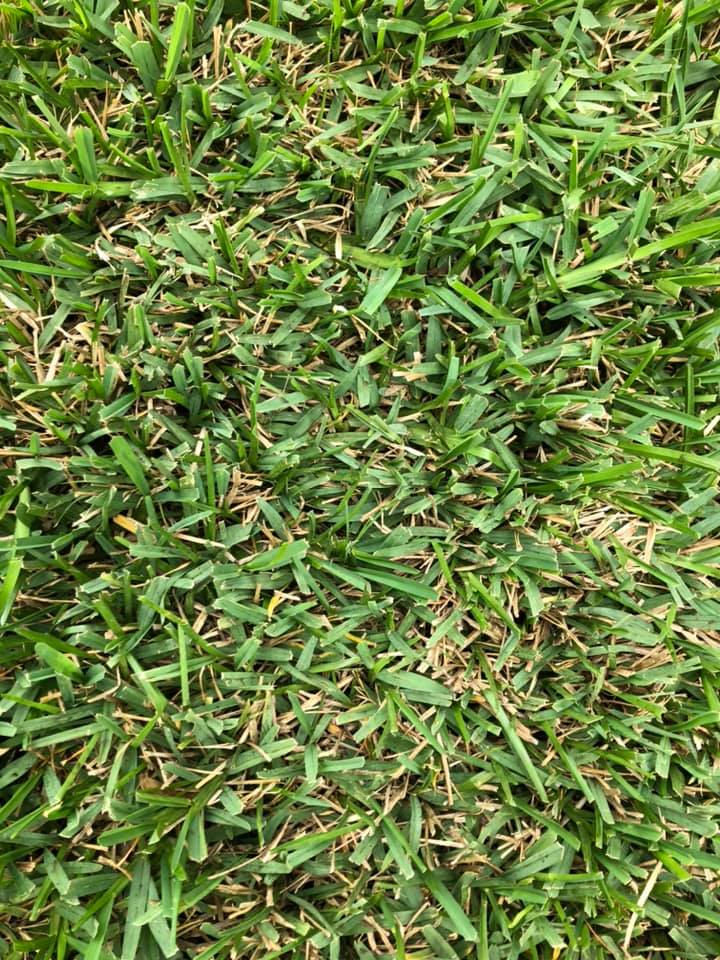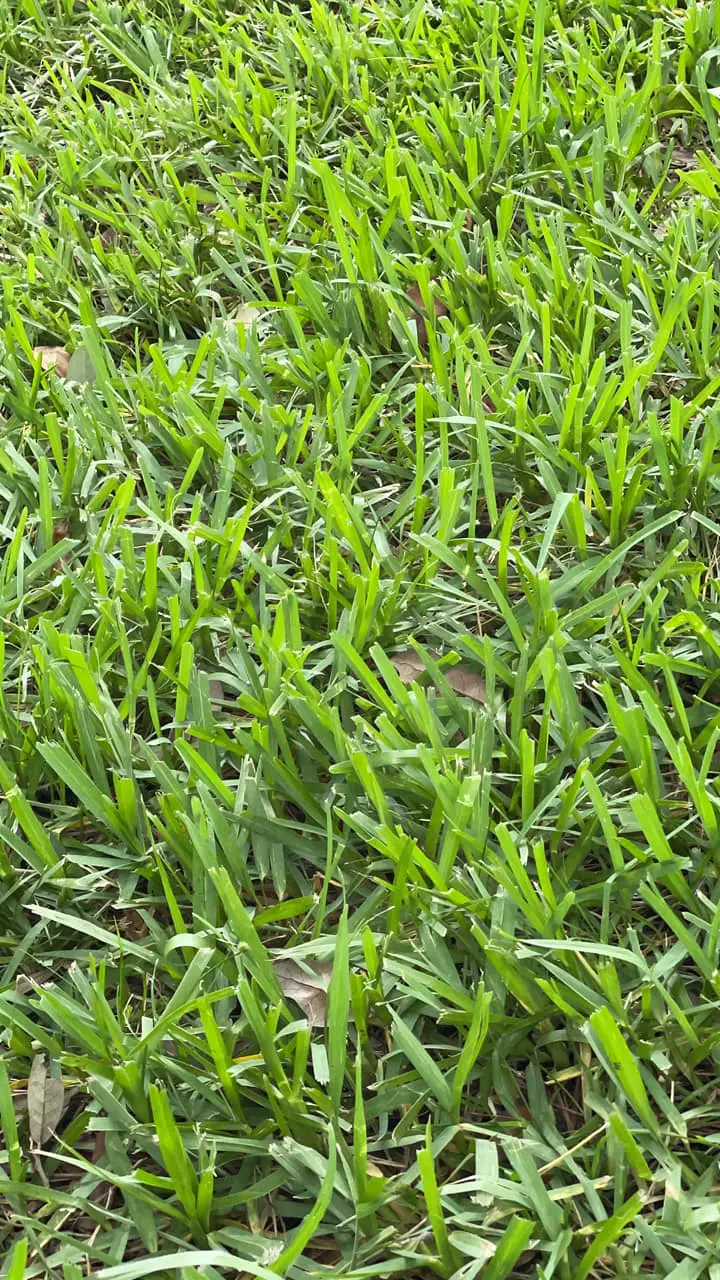When treated right, St. Augustine grass can grow prosperously. It can blanket your lawn with thick, multi-colored green grass. St. Augustine sod can bring out multiple greens in your garden and build a lush turf.
St. Augustine grass is native to tropical climates, so it takes extra care depending on where you live. Many homeowners may struggle to encourage their St. Augustine grass to grow, or worse, the sod may dry out and become thin.
How to Make St. Augustine Grass Thicker
St. Augustine grass spreads and thickens through constant routine and encouragement. It is best to keep in mind the following steps to encourage your St. Augustine grass to grow successfully.
Know The PH of Your Soil
St. Augustine grass grows and spreads quickly in soil with a PH between 5.0 and 8.5. Testing your soil and achieving the desired PH allows for a lush lawn and can make your St. Augustine grass spread quickly.
Plant The St. Augustine Sod in The Summer
St. Augustine grass is a warm-season grass and is grown in hot and moist climates in the Caribbean and Mediterranean regions. When you install this type of St. Augustine grass, it is best to plant it when the weather is humid and closely aligns with its native habitat.
Fertilize It!
St. Augustine grass needs the right amount of nitrogen – phosphorus – potassium. Picking out a slow-release nitrogen fertilizer is ideal when fertilizing your St. Augustine grass.
Water Frequently
To encourage your St. Augustine grass to grow, water it multiple times a day for the first week it is planted. After that, you must soak the grass multiple times a week for six weeks.
Remove Weeds as Much as Possible
Hand pull weeds that pop up around your sod. These weeds are taking up growth space for your St. Augustine lawn. You can also spray the weeds with mild herbicide.
Place St. Augustine Plugs Where The Grass is Thinning
Using St. Augustine grass plugs are beneficial when keeping your St. Augustine lawn thick. You are essentially placing smaller pieces of sod in thinned spots that will eventually spread, thickening the grass and encouraging growth.

How to Make Bermuda Grass Thicker & Fuller
Bermuda grass is another option of sod for homeowners. It is similar to St. Augustine grass in the sense that it is thick and dark green. They both do great at pushing weeds out of the soil and blanketing your lawn in perfect green grass.
To encourage Bermuda grass to grow fully, follow these steps:
- Make sure it is in full sun. Unlike its counterpart that can handle shaded areas, Bermuda sod needs full sun.
- Water twice a week. Watering the grass twice a week in a long soak will allow it to grow full.
- Fertilize in the spring. Be sure to fertilize your Bermuda soil with a slow-release nitrogen fertilizer.
- Check your soil PH. Bermuda grass needs soil with a PH of 5.8 to 7.0.
Mowing St. Augustine Grass
When mowing your St. Augustine grass, you need to keep the grass as high as possible. When you mow your lawn, program your lawnmower to keep the grass height at 3.5 to 4.5 inches.
You will need to mow the lawn frequently since it needs to be higher than other grasses. However, this will encourage your St. Augustine lawn to grow and become full.

Mowing Frequently Can Increase The Thickness of Bermuda Grass
Mowing as much as possible can encourage all lawns to grow. Bermuda grass should only be 1 inch high to encourage growth. Be sure the lawnmower is programmed to keep the lawn trimmed to be only 1 inch.
Aerate Your St. Augustine Lawn
Aerating your lawn can encourage faster root development in every type of lawn. Aerating can relieve compaction and allow St. Augustine grass to spread.
When it comes to St. Augustine grass, aerating from mid-spring to summer will allow the grass to thicken. After you aerate your St. Augustine lawn, fertilize and water your lawn to recover from any impact. Aerating your St. Augustine lawn twice a year is ideal.
Prevent & Kill Weeds
A thick weed-free lawn is the best weed prevention. However, if your St. Augustine grass is not thickening and is allowing weeds to escape, you may need to resort to other solutions.
Weeds can cause your St. Augustine grass to thin by taking away space, water, and nutrients. You should apply mild herbicide five weeks before planting your St. Augustine grass and plant the sod in as many spaces as possible to choke the weeds.
Control St. Augustine Grass Fungus
Lawn fungus can cause your St. Augustin grass to thin along with any other lawn diseases. If there are any fungal diseases in your St. Augustine grass, you will notice patches of browning and yellowing grass.
It is best to replace infected patches with new sod or plugs and use a fungicide to control fungal disease. It is best to make sure you are using the correct fertilizer, aerating your lawn, and watering your St. Augustine lawn as much as possible to avoid dryness.
Irrigation / Watering
When you first install your St. Augustine grass, you should be watering your lawn multiple times a day for the first week.
To make things simple, prepare an irrigation system that will be on a timer. After the first week of installation, your St. Augustine grass should be watered thoroughly multiple times a week.
How Do You Encourage St. Augustine to Spread?
To encourage your new or aged St. Augustine grass to spread, you should follow a routine for your lawn. A routine that involves frequent mowing, fertilizing and aerating as needed, and watering will encourage your St. Augustine grass to spread quickly.
St. Augustine Grass FAQs
Why is My St. Augustine Grass Thin?
If your St. Augustine grass is thin and not living optimally, you may not be encouraging growth for your lawn. If your St. Augustine grass is thinning, it could be for multiple reasons. Your grass may have dry or waterlogged soil, have a weed invasion, you may be mowing the grass too short, or your soil may not be the correct PH.
Routinely test your soil, and check for weeds. Be sure your irrigation system is working properly to encourage your St. Augustine grass to grow successfully.
How Do You Make Grass Grow Thicker?
To encourage your grass to grow thicker, it is best to water it depending on its needs. If it is not St. Augustine grass, it may require less water and can handle dryness.
Be sure to aerate your lawn twice a year, fertilize the lawn correctly, remove weeds as much as possible, and mow frequently.
Will St. Augustine Grass Fill in Bare Spots?
Extensive bare spots may be irreparable. A quick and easy fix to fill in a bare spot is to use grass plugs or sod to patch the spots.
When patching St. Augustine grass, rake the dirt patch and plant the plugs or sod. Proper preparation will allow your St. Augustine grass to spread quickly.
